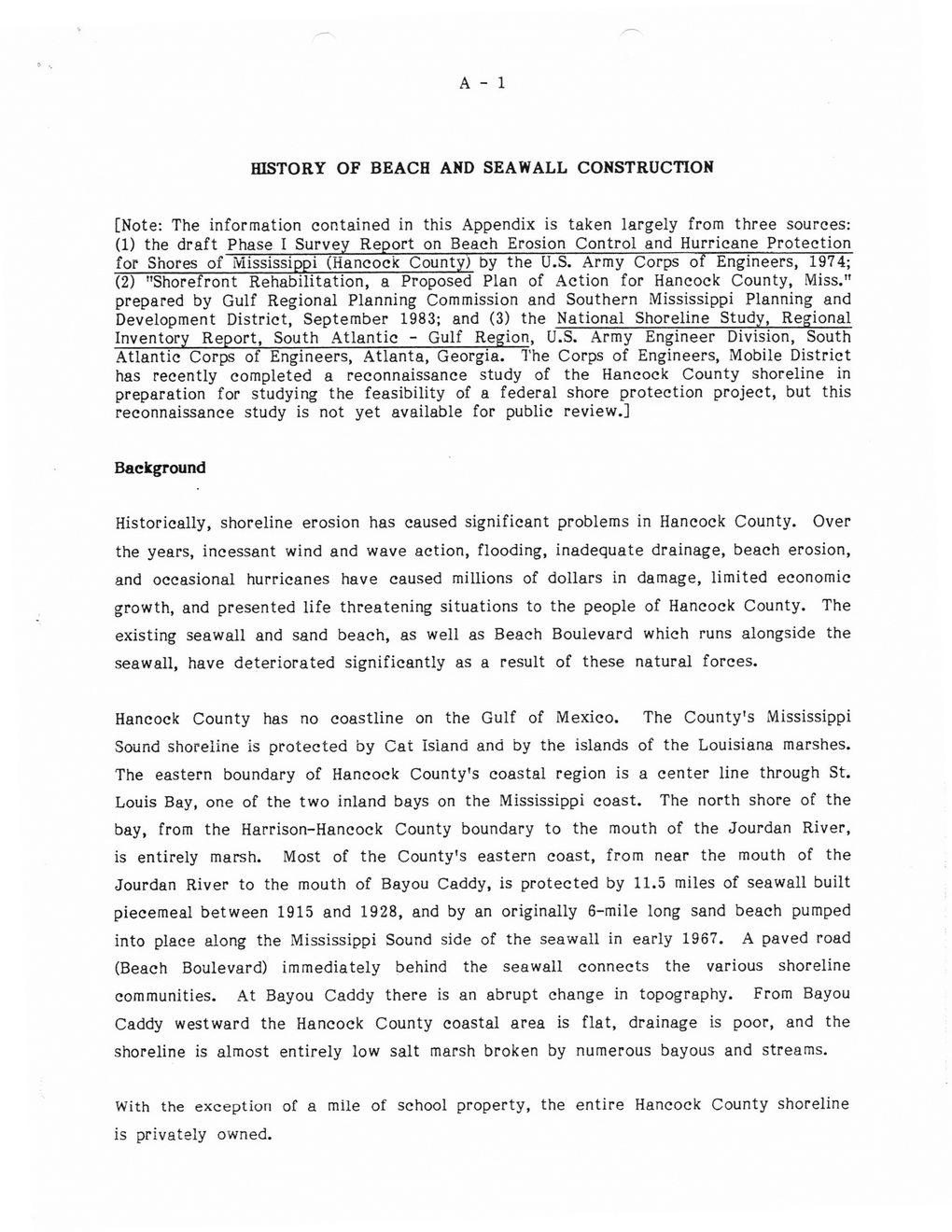This text was obtained via automated optical character recognition.
It has not been edited and may therefore contain several errors.
A - 1 HISTORY OF BEACH AND SEAWALL CONSTRUCTION [Note: The information contained in this Appendix is taken largely from three sources: (1) the draft Phase I Survey Report on Beach Erosion Control and Hurricane Protection for Shores of Mississippi (Hancock County) by the U.S. Army Corps of Engineers, 1974; (2) "Shorefront Rehabilitation, a Proposed Plan of Action for Hancock County, Miss.” prepared by Gulf Regional Planning Commission and Southern Mississippi Planning and Development District, September 1983; and (3) the National Shoreline Study, Regional Inventory Report, South Atlantic - Gulf Region, U.S. Army Engineer Division, South Atlantic Corps of Engineers, Atlanta, Georgia. The Corps of Engineers, Mobile District has recently completed a reconnaissance study of the Hancock County shoreline in preparation for studying the feasibility of a federal shore protection project, but this reconnaissance study is not yet available for public review.] Background Historically, shoreline erosion has caused significant problems in Hancock County. Over the years, incessant wind and wave action, flooding, inadequate drainage, beach erosion, and occasional hurricanes have caused millions of dollars in damage, limited economic growth, and presented life threatening situations to the people of Hancock County. The existing seawall and sand beach, as well as Beach Boulevard which runs alongside the seawall, have deteriorated significantly as a result of these natural forces. Hancock County has no coastline on the Gulf of Mexico. The County's Mississippi Sound shoreline is protected by Cat Island and by the islands of the Louisiana marshes. The eastern boundary of Hancock County's coastal region is a center line through St. Louis Bay, one of the two inland bays on the Mississippi coast. The north shore of the bay, from the Harrison-Hancock County boundary to the mouth of the Jourdan River, is entirely marsh. Most of the County's eastern coast, from near the mouth of the Jourdan River to the mouth of Bayou Caddy, is protected by 11.5 miles of seawall built piecemeal between 1915 and 1928, and by an originally 6-mile long sand beach pumped into place along the Mississippi Sound side of the seawall in early 1967. A paved road (Beach Boulevard) immediately behind the seawall connects the various shoreline communities. At Bayou Caddy there is an abrupt change in topography. From Bayou Caddy westward the Hancock County coastal area is flat, drainage is poor, and the shoreline is almost entirely low salt marsh broken by numerous bayous and streams. With the exception of a mile of school property, the entire Hancock County shoreline is privately owned.

Beach History History-of-Beach-and-Seawall-Construction-(2)